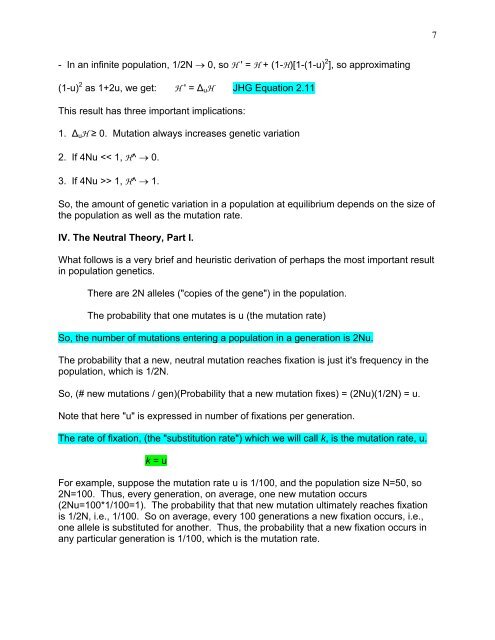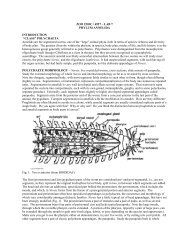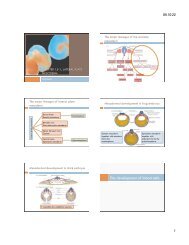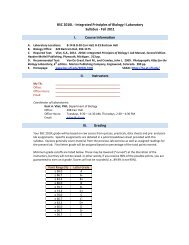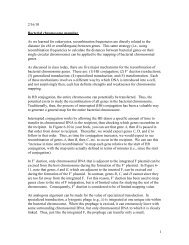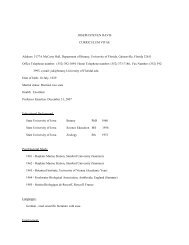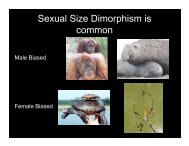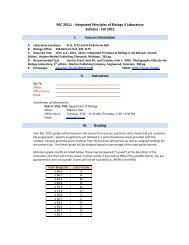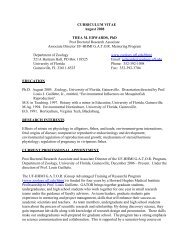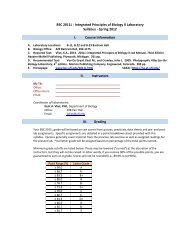Drift 2
Drift 2
Drift 2
You also want an ePaper? Increase the reach of your titles
YUMPU automatically turns print PDFs into web optimized ePapers that Google loves.
7- In an infinite population, 1/2N → 0, so H ' = H + (1-H)[1-(1-u) 2 ], so approximating(1-u) 2 as 1+2u, we get: H ' = Δ u H JHG Equation 2.11This result has three important implications:1. Δ u H ≥ 0. Mutation always increases genetic variation2. If 4Nu > 1, H^ → 1.So, the amount of genetic variation in a population at equilibrium depends on the size ofthe population as well as the mutation rate.IV. The Neutral Theory, Part I.What follows is a very brief and heuristic derivation of perhaps the most important resultin population genetics.There are 2N alleles ("copies of the gene") in the population.The probability that one mutates is u (the mutation rate)So, the number of mutations entering a population in a generation is 2Nu.The probability that a new, neutral mutation reaches fixation is just it's frequency in thepopulation, which is 1/2N.So, (# new mutations / gen)(Probability that a new mutation fixes) = (2Nu)(1/2N) = u.Note that here "u" is expressed in number of fixations per generation.The rate of fixation, (the "substitution rate") which we will call k, is the mutation rate, u.k = uFor example, suppose the mutation rate u is 1/100, and the population size N=50, so2N=100. Thus, every generation, on average, one new mutation occurs(2Nu=100*1/100=1). The probability that that new mutation ultimately reaches fixationis 1/2N, i.e., 1/100. So on average, every 100 generations a new fixation occurs, i.e.,one allele is substituted for another. Thus, the probability that a new fixation occurs inany particular generation is 1/100, which is the mutation rate.


